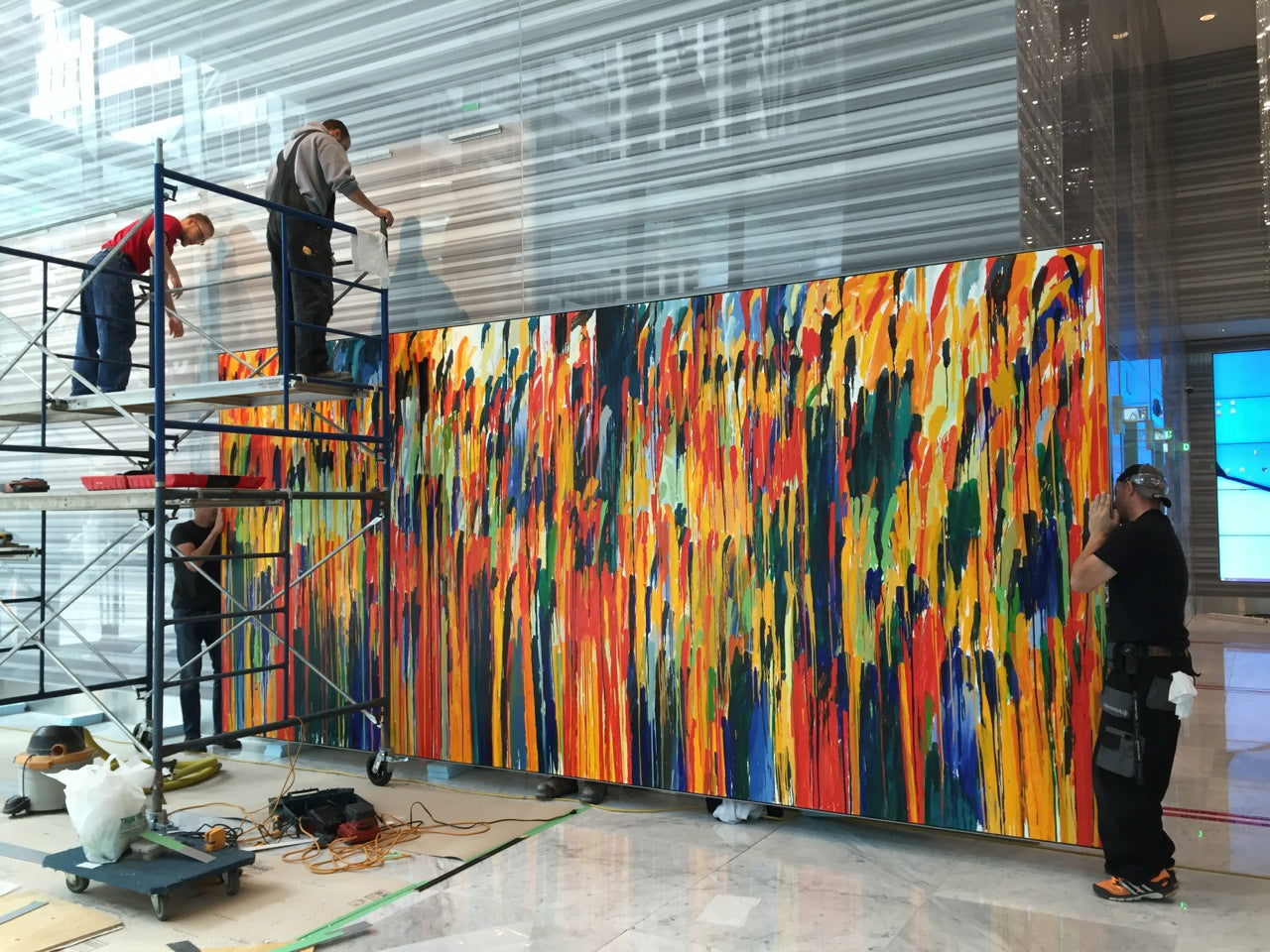Linen vs. Cotton: The Pros & Cons
For a professional artist, making the choice between cotton or linen canvas could be simple, particularly as their materials and equipment are usually insured against loss, damage or theft. However, for student or amateur painters, the selection may not be as obvious – or even as important. Some use their art as a means to support their financial security, while others just paint as a hobby. There is no reason set in stone as to why one class or the other should stick to a particular type of canvas. Most of the time, it happens to come down to personal preference and monetary ability.
Looking for cotton or linen canvas?
Other factors can also affect what type of canvas is used – price, durability, and general longevity, to name a few. Although the two materials are quite different in their own respects, one similarity is apparent: Both fibres hold oil and acrylic paint perfectly well, making either option suitable for whichever medium is to be used. With proper preparation of the canvases, the two could sometimes be considered comparable to one another.
STRETCHING THE CANVAS
Before delving into the painting aspect, it is important to know whether or not the artist is planning to stretch his or her own canvas. For someone just beginning this impressive craft, cotton is usually recommended for its ability to stretch easily. Linen is typically more rigid and less forgiving, being mostly advised for use by the experienced stretcher. When choosing a textile, the artist should look for a close, tight weave made up of similar thread sizes. These two factors will aid in finding the highest quality fabric available.
SIZING/PRIMING
Once the material of choice is mounted on a wooden frame, it is in the best interest of the artist to use a suitable canvas sizing. Among the more traditional means of sizing a canvas is rabbit skin glue (RSG), made from refined rabbit collagen and sold as a powder requiring reconstitution. This product yields the best results for tightening the fabric, but is only appropriate for use with oil paints; acrylic media will simply flake off of the RSG once it has dried. For those who are not as excited as some about using a rabbit by-product, a more animal-friendly option is available: a ready-made, acrylic-based gesso which is suitable for use with both oil and acrylic paints. It does not make the canvas as taut as RSG, but many artists see it as a sensible alternative with greater versatility.
COTTON COSTS LESS
When cost is the main concern, the more popular choice is typically a cotton canvas. They are habitually sold for less because the painting surface lacks quality. In most cases, the end result is coarse and irregular–making insertion of non-distorted, smaller details within a painting nearly impossible. Granted, a few layers of canvas primer can resolve this issue with relative ease; the primer provides a solid foundation on which to paint by filling in any gaps between the threads. A smoother surface greatly increases the aesthetic characteristics of a painting done on cotton fabric.
A naturally white surface can be obtained without any extra steps during the initial preparation of a cotton canvas. This convenient aspect is what oftentimes leads people in that direction. Linen comes in both white and its own tan-gray color. The lighter shades are achieved by implementing a chemical bleaching process which can, unfortunately, weaken the fibers during oxidation. If a longer lifespan of the canvas is desired, it is best to use an unbleached linen layered with a light-colored primer.
LINEN EQUALS QUALITY
Most artists agree that a linen canvas, especially produced in Belgium, is the foremost in quality. The tedious manufacturing process required to make flax plants into linen is an expensive operation, directly contributing to the high cost of the material. Harvesting of the temperamental plants is mostly done by hand, as the end result would be less profitable if done by a machine. If a piece of equipment were to cut the stalks above ground, the root would be wasted and the fibers would be shorter–thus resulting in lesser quantities of usable product. Extracting the plant fibers from the stalks is also done by hand; Sometimes, a cotton machine is used to process the flax fibers, but the final product is of a lower caliber. In some instances, linen will be mixed with other plant fibers to cut down on the cost of the final textile. The downside to a blend is that different materials have different absorption rates, which could potentially cause an uneven painting. Even so, this risk is lessened if the plant fibers are blended within the thread rather than the vertical and horizontal threads that make up the weave.
A linen canvas has a painting surface that is smoother and more robust. The fiber’s natural tensile strength is double that of cotton, contributing to a fabric that will not stretch easily when moistened. For this reason, linen is the better option for larger pieces of work. The cloth will still hold its overall shape and tautness in most circumstances and environments.
LONGEVITY OF A PAINTING
Another factor to consider is the desired longevity of the painting. If the piece is to be used as a temporary wall decoration, a cotton canvas would be the more cost-effective and economical choice. The reasoning behind this is relative to the rate at which cotton decays. The fibers are significantly weaker in structure than linen fibers, especially when wet. However, a heavier weight cotton canvas can combat the effects of excessive moisture. The fibers in an untreated cotton canvas are, in essence, unprotected cellulose–easily broken down by ultraviolet light and the acidity found in polluted air. For a painting that will stay true to the test of time, choose linen. It has antibacterial and antifungal properties, both of which help to preserve the integrity of the material.
CONCLUSION
Ultimately, the choice between cotton and linen canvases is determined by what is to be gained from the piece. A casual artist should not feel obligated to use the more “traditional” methods if it is not financially feasible, nor should a professional feel that any type of canvas is beneath their ability.








